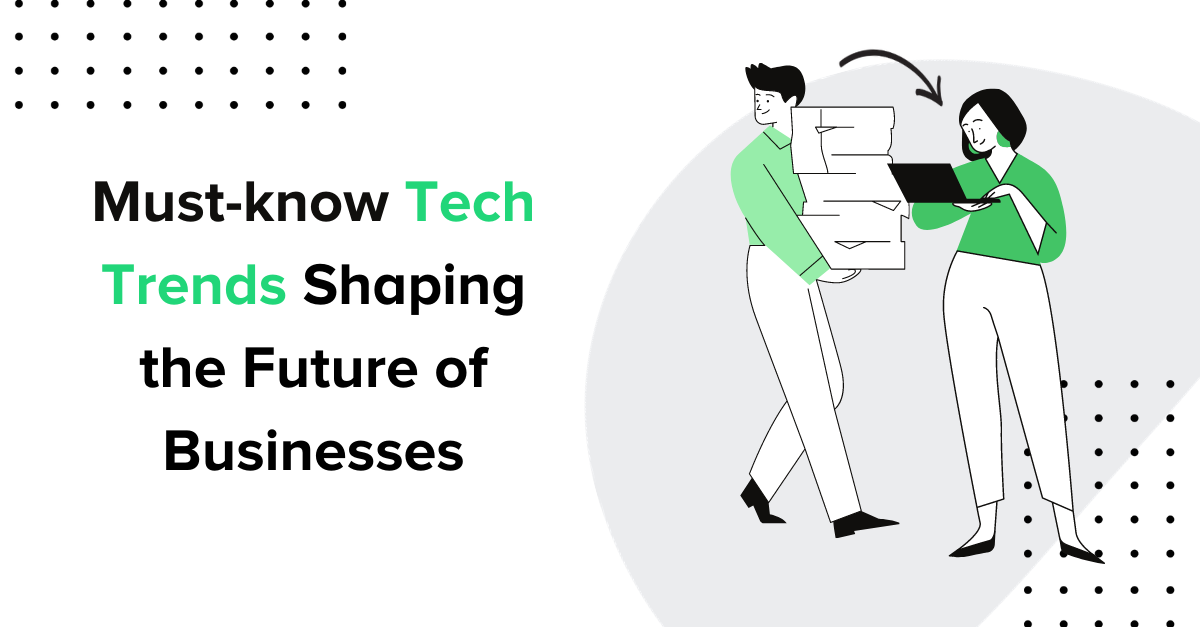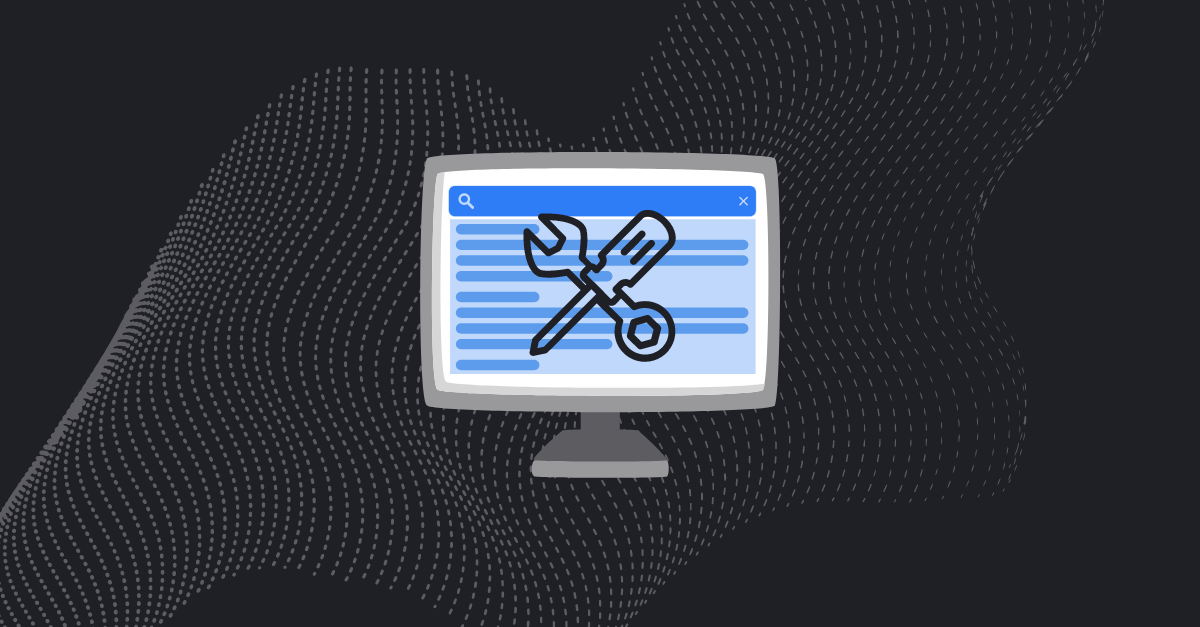A lot changed for businesses in 2020. Some thrived and were able to successfully navigate the challenges and demand created by the pandemic. For others, it threw a wrench into their operations, even halting some completely.
Either way, it made most companies realize they need technology to keep their business afloat.
In 2021 and beyond, tech is essential for staying competitive. And while you might be aware of some of the trends shaping the future, it’s not enough. You need to fully embrace digital transformation and reimagine your business in this modern age.
To help you, we put together a list of the must-know trends changing how businesses operate with tech. As you read through them, look for ways to harness these trends for your own advantage.
 1. Business Strategy = Tech Strategy
1. Business Strategy = Tech Strategy
It used to be that your business strategy and tech strategy were separate. The C-suite would set the company strategy. Then the IT team would assemble the technology required to support that company strategy.
But business strategy and tech strategy are blurring together. Now, your technology strategy IS one in the same of your business strategy. Why?
Because technology is the backbone of your business. What you use can differentiate your internal operations and customer service. It directly impacts your ability to compete in today’s tough markets.
And the wrong tech choices can hold your business back. Sit with that idea for a moment.
Not sure you agree?
Consider companies like Blockbuster Video, Borders, and Kodak. They all fell victim to companies who leveraged technology like Netflix and Amazon.
But not only did these winning brands use tech to differentiate, they “thought like software companies” without actually selling software.
What does that mean? They created cultures that use software principles like agile planning, user feedback loops, and constant experimenting and testing. This led to innovative ideas that enabled them to embrace tech to drive value for their customers.
The best part? Any company can think like a software company, even if you’re in a legacy industry not known for tech. You can think creatively about how to use digitization to improve operations and your customer experience.
It’s not about “how it’s always been done” or “how everyone does it in our industry.” It’s about being laser focused on customer value and how tech can help.
Read more about how every company needs to be a software company (yes, yours too).
2. COVID-19 Accelerated Digital Transformations
COVID-19 shifted forward schedules for digital transformations from “we’ll get to it in a few years” to “we need this done in weeks.”
85% of CEOs found that their company’s digital transformations accelerated during the pandemic. For example, it’s estimated that the pandemic accelerated the shift towards remote work by 5 or 10 years.
So, if your own organization hasn’t dedicated time and effort toward digital transformation, it might IS the time to start.
See our guide for understanding what a digital transformation is (and not) and how to plan for your own.
3. Automation to Increase Efficiency
One goal of a digital transformation is using digitization to increase efficiency and maximize growth (including revenue). And a good way to do that is through automation.
Part of the reason companies are focusing on automation is the current labor shortage. Companies need to find ways to reduce or eliminate the need for human involvement– a need heightened throughout the pandemic.
In fact, 38% of small and midsize businesses are looking to automate manual labor.
When you think of manual labor, you might picture humans operating large machines or working on factory floors. But it doesn’t always have to be that big.
There are all sorts of ways to automate for your business. It could be integrating systems to automate the movement of data between them. Or, it could be implementing new workflows that eliminate multiple data entries or systems needed to complete your daily tasks.
Take SPARK’s client Andy Egan, a mechanical contractor. Before automation, they had to physically write down their purchase orders (PO) and then deliver to all stakeholders. Now they have custom software that allows them to capture POs with a templated version and automatically notify others of it.
In other cases, companies are also turning to new advanced types of automation that use artificial intelligence and machine learning. Rather than replacing the manual work otherwise done by humans, they replace some of the mental work instead.
Computers can be programmed to “think” like humans. They can draw strategic insights, see patterns, and make connections in data automatically. While they don’t replace human thinking, they can augment and supplement it.
No matter how you do it, automation is an easy way to up your productivity.
Read stories about successful business tools launched with SPARK →
4. Cybercrime Risk Continues to Rise
Cybercrime only affects the big companies, right?
Actually, no.
Any company is at risk for cybercrime. In fact, hackers seek out smaller and mid-size companies because they tend to be easy targets. They assume (often correctly) that small companies think “no one is going to bother us” and they skip on putting security measures in place.
But cybercrime is only increasing. Since the start of the pandemic, the FBI reported a 300% increase in cybercrime reports.
Just recently, ransomware attacks have been major news stories, prompting the White House to send a warning memo to companies.
Why all the fuss?
For SMBs, the average cost of downtime from a ransomware attack is $274,000. Yikes.
So what’s the good news?
There are easy steps to take to ensure your business is protected. For example, employee training and awareness is one of the most important, but overlooked factors in cybersecurity.
Smart companies are taking prudent measures to protect themselves. To do the same, watch this 30-minute video from our partner GRIT Technologies about the latest cybersecurity best practices.
5. Supporting Remote and Hybrid Workforces
Whether you’re ready to jump on the train or not, remote and hybrid workforces are here to stay. (Reminder: a hybrid workforce is one made up of some employees that work remotely and some that work in office space.)
There are plenty of benefits of remote work like work-life balance, opening up talent pools, and cutting costs for maintaining a physical office.
But most companies aren’t ready to fully support this type of model properly. While you may be getting by right now, you’re probably not set up for the long run.
It usually requires an overhaul or upgrade of your IT infrastructure to make it happen. You have to be able to support:
- Modern collaboration or other technology
- Cloud computing
- Managing the security of remote access
When companies try to support these workforces with legacy or outdated equipment, they put their operations and companies at risk.
Need help understanding how to upgrade your IT infrastructure? Read this guide.
6. Personalized Experiences Drive Loyalty
People have embraced digital technology and interactions in most aspects of their lives.
But people also have information overload. Our computers and phones give us constant streams of information. It’s harder than ever for any business to stand out among the noise.
So what’s the best way to leave a memorable impression?
Personalize the experience.
How do you do that? Use your knowledge of the customer (past interactions, personal data, current location, etc) to create a tailored experience.
But don’t be creepy. Or illegal about it. Customers care about their data privacy and you should too.
Instead, put yourself in your customers shoes. How would you want to interact with your company? How should your product work for them?
[Read more about what data privacy is and how you can take action.]
One way SPARK helps companies create user-driven experiences in software development is through design thinking. It’s a problem-solving approach that helps you design products or experiences that meet the real needs of your users.
Why does it matter? Customers are in control. They don’t have to make decisions anymore just based on price or availability. They’re seeking out those who provide the best experience (and they’re willing to pay more for it).
Getting Started with Tech
Maybe some of the trends are new to you, maybe some aren’t.
If there’s anything you take away from them, it’s that you can’t sit around waiting to adopt tech. It has to be an integral part of your business and you should be thinking about how to digitize now
Need some help doing that? Reach out to SPARK! We’d love to discuss your business and how you can use tech to take full advantage of these opportunities (while minimizing the risks they present).


 1. Business Strategy = Tech Strategy
1. Business Strategy = Tech Strategy








